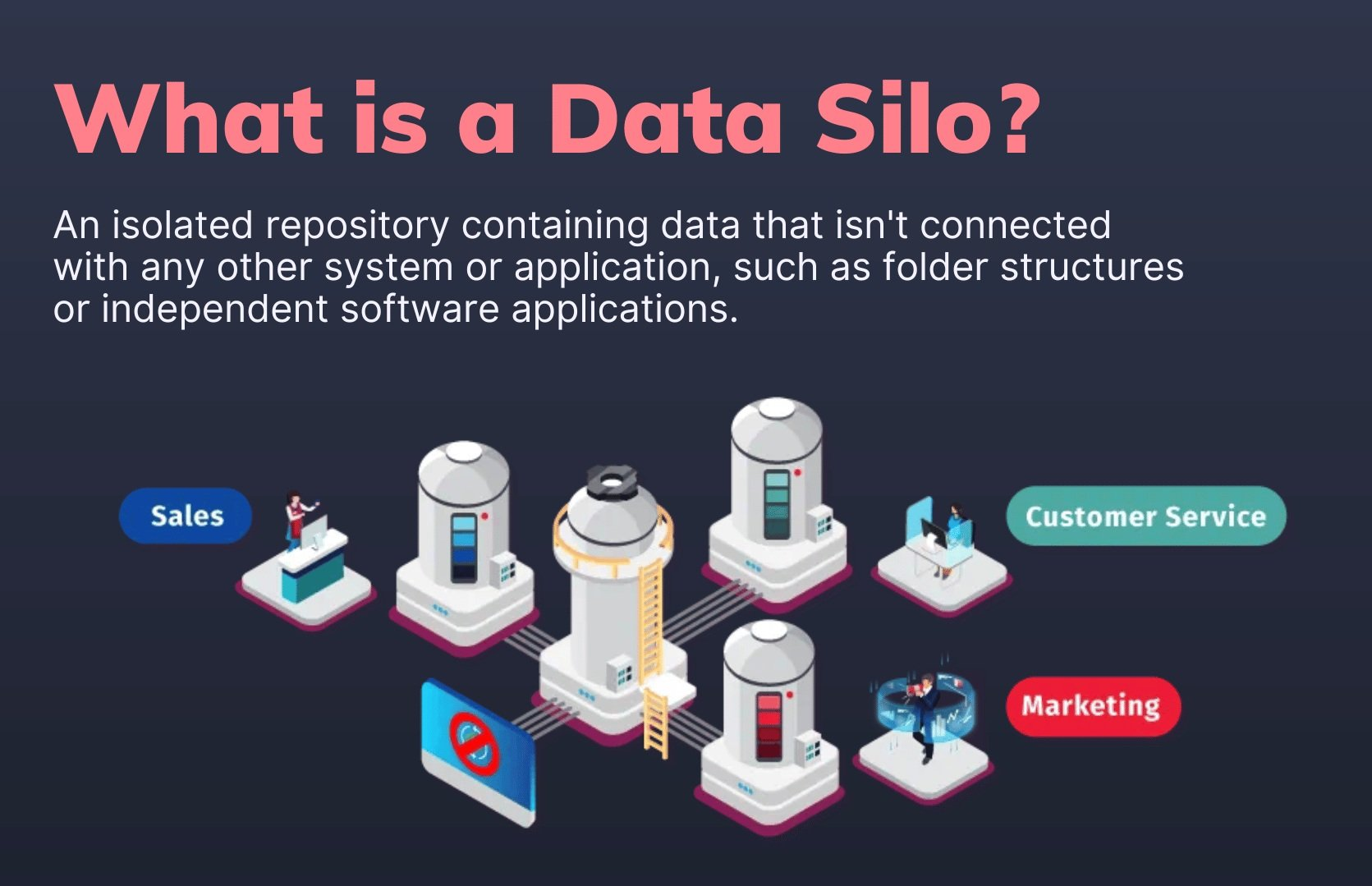Overcoming Data Silos: AI's Role in Integrating Information for Digital Transformation
February 21, 2024 in Artificial Intelligence, Data Architecture by Industry Talk5 minutes
Artificial intelligence can help organizations overcome data silos by integrating information from disparate sources, enabling digital transformation through consolidated data analytics.
Overcoming Data Silos: AI’s Role in Integrating Information for Digital Transformation

In today’s digital age, data is the lifeblood of organizations. It holds valuable insights that can drive business growth, enhance customer experiences, and streamline operations. However, many companies face a significant challenge when it comes to harnessing the full potential of their data - data silos. These silos arise when information is scattered across different systems, departments, or even geographical locations, making it difficult to access, analyze, and utilize effectively.
Data silos can hinder an organization’s ability to achieve digital transformation, which is the process of leveraging technology to fundamentally change how businesses operate and deliver value to their customers. To overcome this challenge, organizations are turning to artificial intelligence (AI) as a powerful tool to integrate information from various sources and break down data silos. In this article, we will explore the role of AI in overcoming data silos and enabling a unified approach to digital transformation.
Understanding Data Silos
Before we delve into the role of AI in overcoming data silos, let’s first understand what data silos are and why they pose a challenge to organizations.
Data silos refer to isolated pockets of data that are stored and managed independently within an organization. These silos can exist due to various reasons, such as:
- Different departments using different software systems
- Mergers and acquisitions leading to disparate data sources
- Geographical divisions operating with separate databases
As a result, data becomes fragmented, duplicated, and inconsistent across these silos, making it difficult to gain a holistic view of the organization’s operations and make informed decisions.
Data silos can have several negative consequences for organizations:
- They hinder collaboration and communication between departments, as employees struggle to access and share relevant information.
- Siloed data also leads to inefficiencies, as employees spend valuable time searching for and reconciling data from different sources.
- Moreover, data silos limit the organization’s ability to leverage advanced analytics and AI technologies to uncover valuable insights and drive innovation.
The Role of AI in Breaking Down Data Silos
Artificial intelligence has emerged as a game-changer in the quest to break down data silos and enable a unified approach to digital transformation. AI technologies, such as machine learning and natural language processing, can analyze vast amounts of data from disparate sources, identify patterns, and extract meaningful insights. Here are some ways AI can help overcome data silos:

Data Integration and Consolidation
AI can automate the process of integrating and consolidating data from various sources, regardless of their format or location. Machine learning algorithms can learn the data structure and relationships, enabling the creation of a unified data model that brings together information from different silos. This consolidated view of data provides a single source of truth, eliminating redundancies and inconsistencies.
Data Cleansing and Enrichment
Data silos often contain incomplete, inaccurate, or outdated information. AI algorithms can analyze and cleanse data, identifying and correcting errors, removing duplicates, and filling in missing values. Additionally, AI can enrich the data by augmenting it with external sources, such as social media feeds, market research reports, or public datasets. This enriched data provides a more comprehensive and accurate view of the organization’s operations.
Intelligent Data Discovery
AI-powered data discovery tools can automatically identify and categorize data across different silos. These tools use machine learning algorithms to analyze metadata, keywords, and content, enabling users to quickly locate and access relevant information. By eliminating the need for manual data searching, AI streamlines the process of data discovery and promotes cross-functional collaboration.
Predictive Analytics and Insights
AI algorithms can analyze integrated data to uncover hidden patterns, trends, and correlations. By applying machine learning techniques, organizations can gain predictive insights into customer behavior, market trends, and operational performance. These insights enable proactive decision-making, helping organizations stay ahead of the competition and drive digital transformation initiatives.
Intelligent Automation
AI technologies, such as robotic process automation (RPA), can automate repetitive and manual tasks involved in data integration, data cleansing, and data analysis. By automating these processes, organizations can free up valuable human resources and accelerate the pace of digital transformation. Intelligent automation also reduces the risk of errors and improves data quality and consistency.
FAQ: Frequently Asked Questions
Q: How can AI help organizations overcome data silos?
A: AI can help organizations overcome data silos by automating the process of data integration and consolidation, cleansing and enriching data, enabling intelligent data discovery, providing predictive analytics and insights, and facilitating intelligent automation.
Q: What are the consequences of data silos for organizations?
A: Data silos can hinder collaboration, lead to inefficiencies, limit the organization’s ability to leverage advanced analytics and AI technologies, and make it difficult to gain a holistic view of the organization’s operations.
Q: What are some common causes of data silos?
A: Data silos can arise due to various reasons, such as different departments using different software systems, mergers and acquisitions leading to disparate data sources, or geographical divisions operating with separate databases.
Q: How does AI integrate and consolidate data from different sources?
A: AI uses machine learning algorithms to learn the data structure and relationships, enabling the creation of a unified data model that brings together information from different silos.
Q: Can AI help improve the quality of data in data silos?
A: Yes, AI algorithms can analyze and cleanse data, identifying and correcting errors, removing duplicates, and filling in missing values. AI can also enrich the data by augmenting it with external sources, providing a more comprehensive and accurate view of the organization’s operations.
Conclusion
Data silos can be a significant barrier to digital transformation, hindering organizations from harnessing the full potential of their data. However, with the power of artificial intelligence, organizations can overcome these silos and integrate information from various sources. AI enables data integration and consolidation, data cleansing and enrichment, intelligent data discovery, predictive analytics and insights, and intelligent automation. By leveraging AI technologies, organizations can break down data silos, gain a holistic view of their operations, and drive digital transformation initiatives with confidence.
Remember, in the digital age, data is the key to success, and AI is the tool that unlocks its full potential. Embrace AI, break down data silos, and embark on a transformative journey towards a data-driven future.
Read more our Data Architecture related articles on Blog
Find more about our conprehensive Data Architecture Guide
Read more our AI related articles on Blog